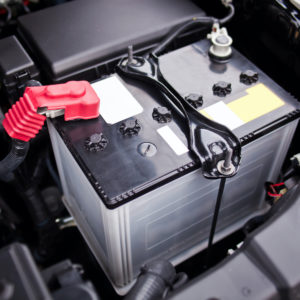The car battery is an indispensable part of your vehicle that delivers electricity to vital parts, especially when you’ve just fired up the engine and the alternator isn’t producing power yet. The battery stores a finite amount of electricity, which is known as its amp rating. Your vehicle can develop problems if it doesn’t receive the right amount of power. Therefore, it’s a good idea to find out your car battery’s amps.
How Many Amps Does a Car Battery Have?
The typical car battery stores anywhere between 550 and 1,000 amps. This value is called an amp rating.

Most batteries display their amp rating on a visible spot. If you can’t find the rating anywhere, try looking for your car’s exact model on its manufacturer’s website. You can also ask a professional mechanic about the battery’s amp rating and your vehicle’s amperage.
Your vehicle’s type and size can play a role in determining what model of car battery it carries as well as its amp rating. Smaller vehicles like cars and compact SUVs don’t need that much power for daily driving, so they have smaller batteries that store only 400 to 600 amperes.
However, full-sized SUVs, trucks, and vans usually require higher amounts of electricity to run heavier, more powerful parts and systems. These large vehicles might have car batteries that store more than 1,000 amps. If you drive one of these machines and it comes with a smaller battery, consider getting a replacement with higher amp capacities.
What Are Amps?
Amp is short for ampere. It’s the unit of measurement for electric current–both the electric flow in a circuit and the amount of electricity moving through it. The bigger the amp value, the more electricity is available.

Amp Hours vs. Amps
Some car batteries show amp hours (Ah) along with amp ratings. They’re related, but not the same.
The amp hour is a unit of measurement that determines the car battery’s capacity. It’s the amount of amps that a vehicle can be given on an hourly basis before the battery reaches its cutoff voltage.
If an amp rating indicates the maximum amount of amperes in a car battery, an amp hour shows how long the battery can last.
Let’s take a 100Ah car battery as an example. If it supplies 5 amps per hour, the battery can keep this up for 20 hours. However, the exact amperage your car needs can vary according to the situation. Running more systems or power-hungry features like the HVAC will consume more amps and drain the battery faster.
When the engine is running, the alternator charges the car battery. There are also car battery chargers for emergencies. Generally, slow charges are recommended to avoid overcharging and extend the battery’s service life.

How Many Amps Should a Car Battery Have for a Jump Start?
It depends on factors like the engine type, size, and capacity. But in general, a car battery needs around 400 to 600 amps to start the engine. Some smaller cars only need around 150 amps, while bigger vehicles like trucks need more car battery amperage to start.
What Is CCA?
CCA (Cold Cranking Amps) is a rating that indicates a battery’s ability to start an engine in cold weather. If you live somewhere cold and you need to buy a new battery, CCA is a crucial consideration.
The CCA rating is based on the number of amps the car battery can deliver at 0 Fahrenheit in 30 seconds while maintaining at least 7.2 volts.
A good rule of thumb is to get a battery with a higher CCA rating than your OE battery.
What Drains a Car Battery?
If you own an older model, its battery could drain if you leave its headlights on. Frequent short drives can also empty your car battery because the alternator won’t have enough time to charge your battery during stops. If your battery can’t hold a charge, it might be due to these issues.
Where to Get a Car Battery Replacement
While jumpstarting makes it possible to drive with a dead battery, it’s only a short-term solution. There’s no alternative to getting a replacement car battery. Fortunately, finding and ordering one only takes a few minutes at CarParts.com.
Carefully handpicked by a team of professionals, our car batteries passed the highest quality control standards. On top of that, we source them from top manufacturers, so you’re sure to get an excellent replacement.
The best part? You don’t even have to take one step outside your door to get your hands on a new car battery. You can use your mobile device or computer to visit our website. Then, use our vehicle selector and search filters to find what you need.
Because our warehouses are strategically located all over the US, you can expect to receive your order in as fast as two business days. If you have questions, our friendly customer service team is available 24/7 through our toll-free hotline.
Check out our catalog and shop now!
Any information provided on this Website is for informational purposes only and is not intended to replace consultation with a professional mechanic. The accuracy and timeliness of the information may change from the time of publication.





























